Capitol riot spurred conspiracy charge against 31 suspects, but how hard is it to prove?
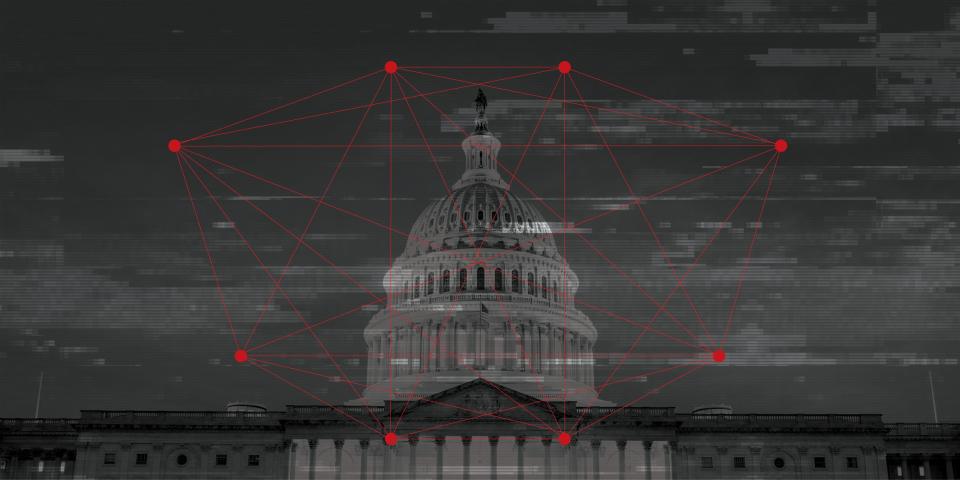
WASHINGTON – Nearly two months before the Jan. 6 Capitol riot, Jessica Watkins, an Oath Keepers member and self-described commanding officer of the Ohio State Regular Militia, warned potential recruits that if Joe Biden became president "our way of life as we know it is over.”
Watkins wrote in a text message that she needed the recruits to be "fighting fit" by Inauguration Day, according to court documents.
"It is our duty as Americans, to fight, kill and die for our rights," she said.
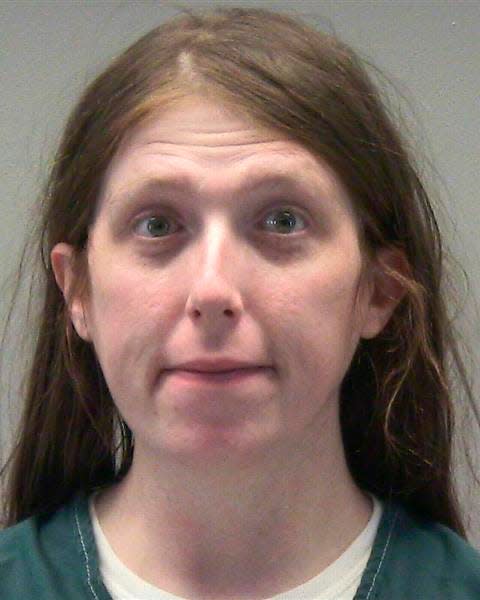
Prosecutors alleged that Watkins promoted “military style" basic training for recruits run by a former Marine drill sergeant while organizing logistics for them to travel to Washington and giving them advice on what weapons are legal in the city and what to wear.
Watkins has since told a judge that she renounces the Oath Keepers, an extremist group that mostly recruits people who served in the military, law enforcement or as first responders, and are concerned a cabal of elites is trying to strip Americans of their rights.
"We're done with that lifestyle," Watkins said.
The bar owner and veteran of the war in Afghanistan is one of 31 people charged with conspiracy in the Jan. 6 Capitol riot. Conspiracy is a loaded word for the public, but for courts, conspiracy depends on suspects agreeing to take criminal action.
'Military style' training, encrypted apps for planning
More than 430 people have been charged in the riot, which authorities continue to investigate. A USA TODAY review found the 31 alleged conspirators were charged in seven cases, ranging from as few as two defendants to as many as 12. The alleged conspiracies weave together charges, including obstruction of government and police, destruction of property and, in the most violent cases, assault against police officers.
The conspiracy charges link defendants in groups that planned and participated in operations to interfere with Congress counting Electoral College votes that formalized President Joe Biden’s victory, as rioters stormed past barricades, smashed windows and rammed doors to enter the Capitol.
Indictments and FBI affidavits describe members of the Oath Keepers attending or scheduling paramilitary training in combat tactics. They brought and wore paramilitary supplies, including camouflaged outfits, tactical vests, helmets and radios. Oath Keepers and Proud Boys, an extremist group whose members describe themselves as "Western Chauvinists," allegedly used social media, text messaging and encrypted applications to recruit participants from across the country.
The Office of the Director of National Intelligence reported in March that domestic violent extremists “who are motivated by a range of ideologies and galvanized by recent political and societal events in the United States, pose an elevated threat to the homeland in 2021." The report said ethnically motivated violent extremists and militia violent extremists represented the most lethal threats. The extremists exploit social media and encrypted chat applications to recruit, plan and rally support for in-person actions, it said.
Authorities are still investigating conspiracies from Jan. 6 to determine who organized and led the insurrection. More charges are possible as more suspects are identified and if those already charged begin seeking plea agreements to reduce their sentences in exchange for information, according to legal experts.
Insurrection: Oath Keeper enters first guilty plea in Capitol attack
“Any good law enforcement organization will want to exhaust all their investigative resources to find out if there is a wizard behind the curtain and who is he,” said Kevin Davis, a former Baltimore police commissioner who is now director of consulting services for security firm GardaWorld. “They’re not going to take anything at face value. They’re going to see where it goes.”
Conspiracy suspects are nearly all Proud Boys, Oath Keepers
All but a pair of the conspiracy charges so far are against members of the Proud Boys or Oath Keepers, or against people who acted with them.
Among the alleged conspirators:
31 face charges of obstructing an official proceeding.
31 for entering a restricted building or grounds.
21 for destruction of property.
3 for assaulting police officers.
1 for threatening a police officer.
1 for robbery of an officer's shield.
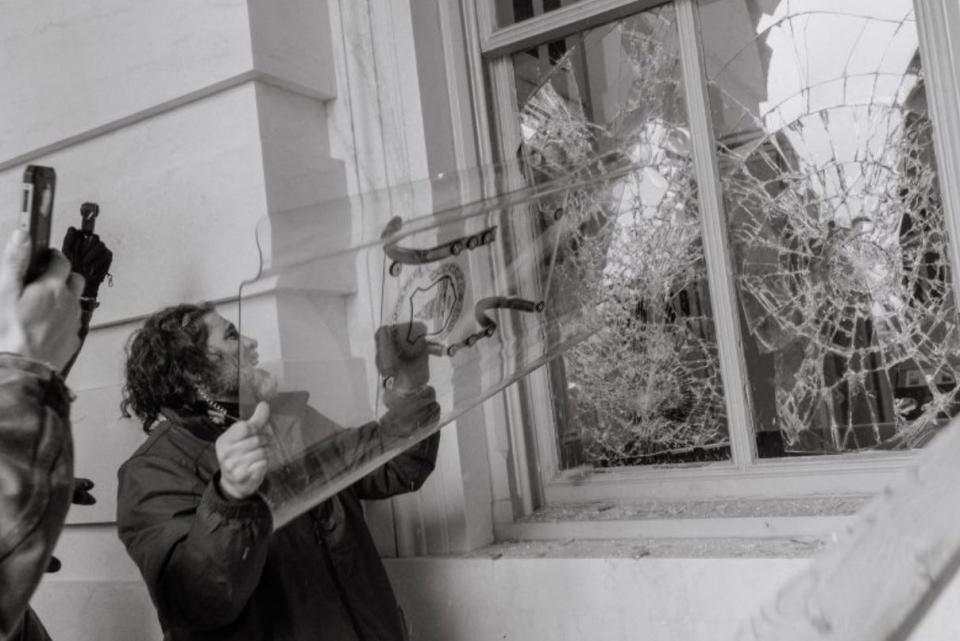
Dominic Pezzola, 43, of Rochester, New York, a Marine veteran and member of the Proud Boys, was charged with assaulting a Capitol Police officer for allegedly ripping away his riot shield and breaking a window with it, according to court documents.
Another member of the Proud Boys, William Chrestman, 47, of Johnson County, Kansas, who was charged with threatening a federal officer, carried a wooden club or axe handle wrapped with a flag, according to court records.
Two defendants who weren't linked to either extremist group, Julian Khater, 32, and George Tanios, 37, were charged with conspiring to injure Capitol Police Officer Brian Sicknick and assaulting him by spraying him with chemical spray. He died of natural causes at age 42 the next day, according to the medical examiner.
All of the defendants have pleaded not guilty.
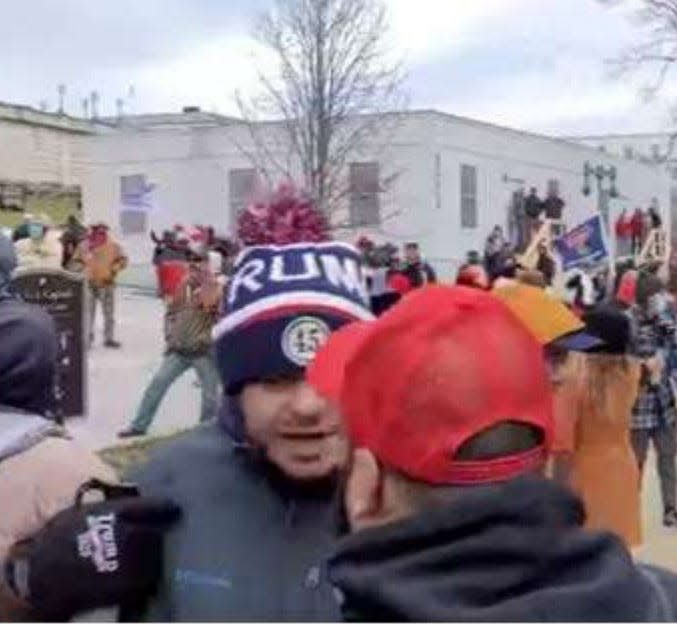
What makes it a conspiracy?
Conspiracies pose a unique danger because they reflect people planning criminal actions, said former federal prosecutor Jimmy Gurulé.
“They come together and work in concert for a criminal purpose,” Gurulé said. “It is a serious offense.”
Conspiracy depends on agreeing to take criminal action, even if it's not successful.
“It doesn’t have to be a sophisticated plan. It doesn’t even have to be a good plan in order to support a conspiracy charge,” said Gurulé, a University of Notre Dame law professor. “In fact, most criminal conspiracies are not. ... That’s why they end up getting caught and successfully prosecuted. They’re not that smart.”
David Sklansky, a Stanford law professor and co-director of the Stanford Criminal Justice Center, noted that insurrectionists stormed the Capitol in an effort to block certification of the results from the presidential election.
“I think it’s worth underscoring that things could have been much worse. There could have been a lot more damage. A lot more people could have been hurt a lot more seriously if law enforcement hadn’t been able to intervene to the extent that they did,” Sklansky said.
How authorities build a conspiracy case
Legal experts say prosecutors will have to prove conspirators agreed to pursue criminal activity and then at least some of them took further steps toward the goal.
“The word conspiracy is a sensational word,” Davis said. “We think the charge of conspiracy involves a sophisticated plot and it doesn’t always.”
He said the key is being able to prove elements such as defendants planning, coordinating and recruiting for a criminal activity. Surveillance video, social media, text messages and phone calls help authorities build a case.
“Sometimes these events look spontaneous, but they’re not,” Davis said. “Sometimes they are spontaneous.”
Members of the Oath Keepers, for example, moved into the Capitol in a military formation called a "stack," where each person holds the shoulder of the person ahead, according to court records.
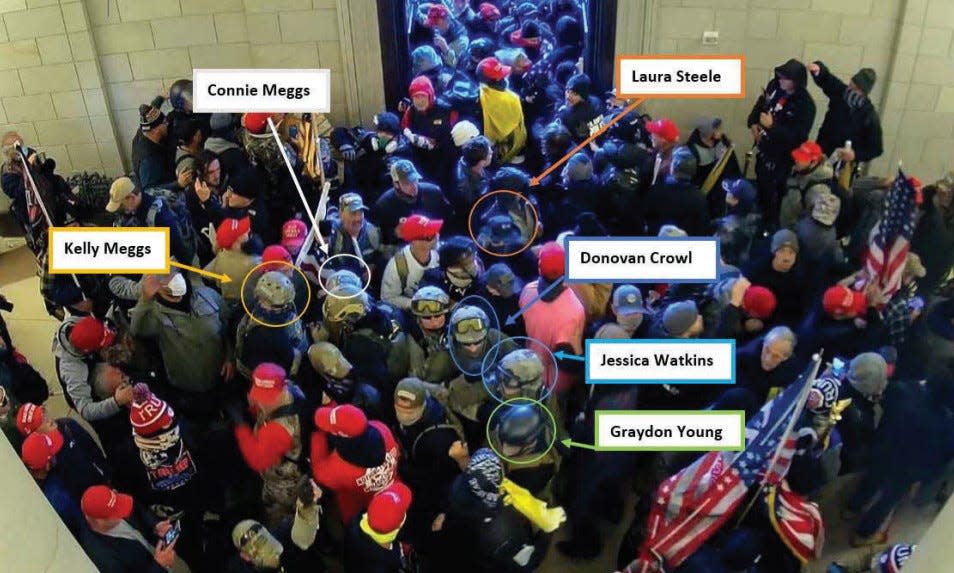
Gurulé said encrypted communications and moving in unison in formation would be evidence of a conspiracy.
“That’s compelling evidence of a concerted activity from which one could infer conspiratorial agreement," he said.
As described in indictments and FBI affidavits, alleged conspirators recruited others through social media, such as Parler and Facebook. They communicated through encrypted apps such as Signal and Telegram, which prosecutors said is similar to Twitter, but has a reputation for not cooperating with law enforcement. And they used Zello, an app that adapts cellphones to work like walkie-talkies.
Oath Keepers' alleged preparations: Mace, gas masks, Tasers, nightsticks
Several of the alleged conspirators talked about training for actions in Washington.
Watkins, 38, of Champaign County, Ohio, described training in “military style basic, here in Ohio, with a Marine Drill Sergeant running it,” according to court records.
Another defendant from the same county in Ohio, Donovan Crowl, 50, attended a training camp in December in North Carolina, according to court records.
Graydon Young, 54, of Englewood, Florida, wrote an email Dec. 26 that said he trained on firearms and combat with a Florida company and “recommended your training to the team.”
Kelly Meggs, 52, of Dunnellon, Florida, wrote on Facebook on Dec. 25: “Dc is no guns. So mace and gas masks, some batons. If you have armor, that’s good.”
When a recruit texted questions about a march on Nov. 14, Watkins said they couldn’t take firearms into the city, “Just mace, tasers and nightsticks.”
Kenneth Harrelson, 40, of Titusville, Florida, organized 30 online meetings under the names “gator 6” or “hotel 26” or “kenneth harrelson,” according to court records. A meeting Jan. 3 through the online meeting site Go to Meeting was titled “dc planning call,” according to court records.
'This comes from the top': Proud Boys' alleged preparations
Zachary Rehl, 35, of Philadelphia, who was president of a local Proud Boys chapter, posted a fundraising link that generated $5,500 from Dec. 30 to Jan. 4 for “Travel Expenses for upcoming Patriot Events,” according to court records.
Proud Boys international chair Enrique Tarrio posted a Parler message Dec. 29 saying members of the group wouldn’t wear traditional black and yellow shirts, but travel incognito.
After Tarrio was arrested Jan. 4, Charles Donohoe, 33, of Kernersville, North Carolina, created new secure channels for encrypted messaging, according to court records.
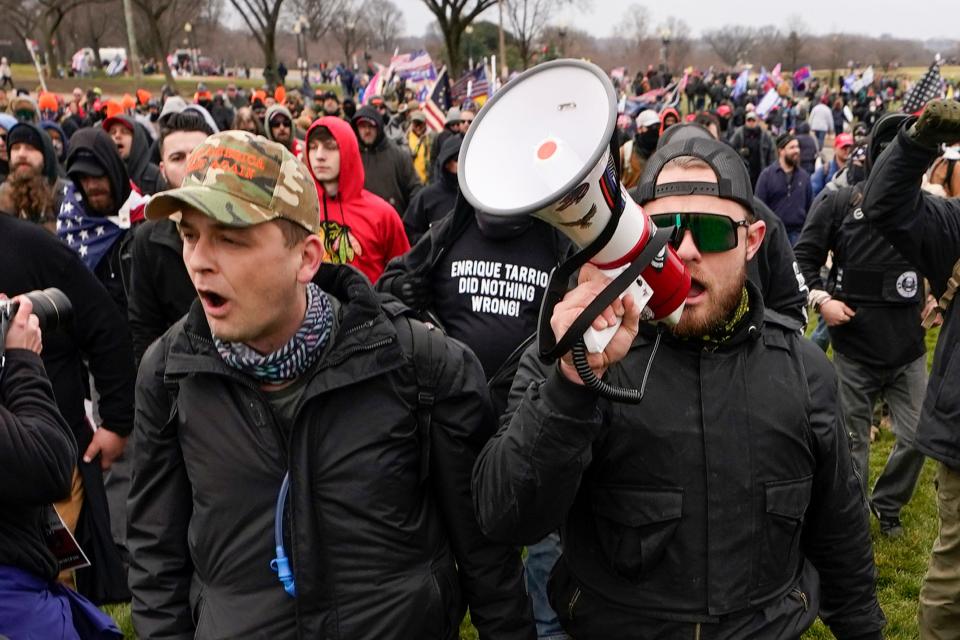
“Everything is compromised and we can be looking at Gang charges,” Donohoe wrote, according to court records. “Stop everything immediately.”
“This comes from the top,” he added.
An encrypted messaging channel for Proud Boys members in Washington called "Boots on the Ground" was created Jan. 5 and more than 60 users participated, according to court records.
Actions at the scene
Members of Proud Boys carried rolls of fluorescent orange tape rather than their traditional black and yellow shirts, according to court records. Some members wore tactical gear including helmets and gloves. Some members of Oath Keepers wore helmets, reinforced vests and camouflage clothing.
Rehl said he was bringing multiple radios for Proud Boys meeting at the Washington Monument at 10 a.m., according to court records. Another Proud Boys member, Joseph Biggs, 37, of Ormond Beach, Florida, was photographed with a walkie-talkie on his chest.
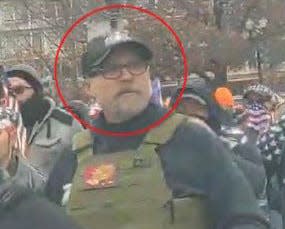
As rioters battled with police, Chrestman allegedly yelled, “You shoot and I’ll take your f------ ass out,” according to court records.
Nicholas DeCarlo of Burleson and Fort Worth, Texas, and Nicholas Ochs of Waikiki, Hawaii, who has "Proud Boy" tattooed on his arm, entered the Capitol soon after the breach, according to court records. They allegedly defaced the Memorial Door to the Capitol by inscribing “MURDER THE MEDIA,” according to their indictment.
Thomas Caldwell, 65, of Clarke County, Virginia, used Zello to create a channel called “Stop the Steal J6,” according to court records. Caldwell allegedly provided logistical support to monitor the Capitol from a distance.
“We are surging forward,” he wrote to Facebook contacts at 2:48 p.m. Jan. 6. “Doors breached.”
“All members are in the tunnels under the capital seal them in,” said a Facebook post Jan. 6 to Caldwell, according to court records. “Turn on gas.”
How far did they go?
Several of the defendants argued at detention hearings that they hadn’t entered the Capitol and shouldn’t be blamed for what happened inside.
Caldwell, a retired Navy lieutenant commander, was released March 12 to home confinement pending trial after District Judge Amit Mehta found he was “differently situated” from co-conspirators the day of the riot because he didn’t enter the building.
Caldwell’s lawyer, David Fischer, said the “government has produced absolutely no evidence” of a plan to invade the Capitol. Fischer said Caldwell was focused on organizing a quick-reaction force to contend with possible violence from Trump’s opponents.
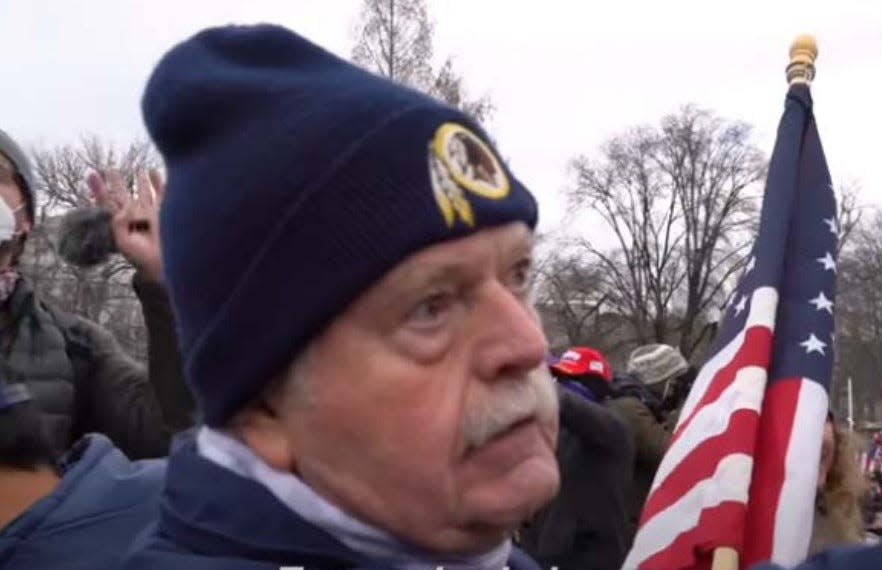
“They were not planning to go into the Capitol,” Fischer said.
In Donohoe’s case, prosecutors argued that he “played a direct role in unleashing violence on the Capitol.” Donohoe declared in Telegram messages that Jan. 6 made him “feel like a complete warrior” and that “We stormed the capitol unarmed… and we took it over unarmed,’ according to court records.
Donohoe’s lawyer, Lisa Costner, argued during a detention hearing that he never entered the Capitol. She said any celebratory comments about the riot resulted from braggadocio while drinking beers with friends afterward.
“This is not a man who was marshaling a large group of Proud Boys,” Costner said. “I think that’s a pretty far stretch.”
But Assistant U.S. Attorney Jason McCullough said Donohoe helped recruit and organize a group of men who traveled across the country to disrupt the peaceful transfer of power of U.S. government.
“The danger is that he has the resources and capabilities to organize and mobilize – including travel to a location across the country,” McCullough said. “There is a continuing threat that Donohoe represents.”
Legal experts said it doesn’t matter whether conspirators entered the Capitol.
“The allegations in these indictments go well beyond charging that there was an agreement to commit a crime,” Sklansky said. “This is well beyond the bare minimum that would be required for a conspiracy charge.”
Some alleged conspirators still in jail
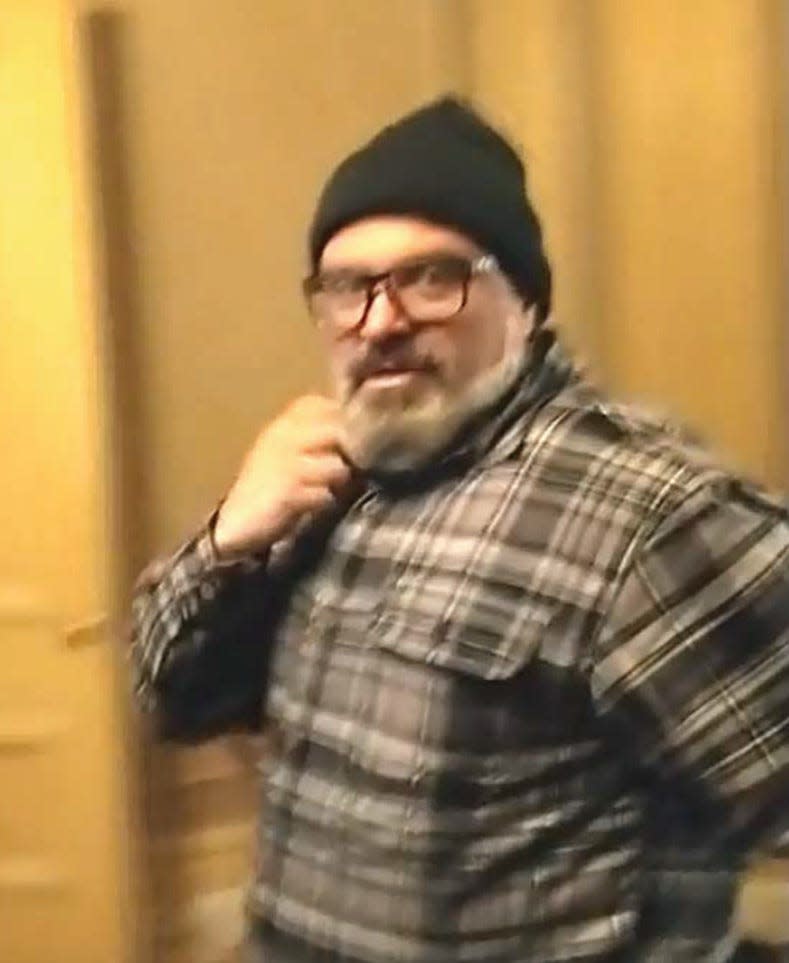
The charges are serious enough that several defendants remain jailed pending trial.
District Judge Timothy Kelly ordered April 19 that Proud Boys members Ethan Nordean, 30, of Auburn, Washington, and Biggs to be taken into custody after they were initially released to home confinement. Prosecutors said new evidence from Telegram messages showed the two were involved in planning the obstruction of Congress and law enforcement.
Watkins told Mehta she disbanded her militia, but Mehta called her an active participant and organizer, with materials found at her home that suggested the potential for further violence. According to court records, a search of Watkins’ house Jan. 17 found:
battle gear.
radio.
mini drone.
pepper spray.
numerous firearms.
paintball gun with rubber-steel balls.
pool cues cut down to batons.
zip ties.
recipe for a destructive device.
“You are an active participant, organizer, leader of others in engaging in this kind of conduct,” Mehta said.
Attempts to hide alleged conspiracy
Participants allegedly scrubbed their social media of posts about the riot. Young deleted his Facebook account and Caldwell deleted pictures from Facebook, according to court records.
Prosecutors said Donohoe tried to “nuke” messages on Telegram discussing the riot, but was unsuccessful.
“He is not some master Telegram administrator,” said Costner, Donohoe’s lawyer.
But Sklansky said using encrypted messaging and erasing social media posts after the riot could be evidence of a guilty state of mind.
“It’s evidence that these individuals thought it was important to disguise their communications from law enforcement,” Sklansky said.
Donald Trump's influence on the Capitol riot
The alleged conspirators aren’t charged with communicating with congressional Republicans or Trump’s team. But members of the extremist groups evidently drew inspiration from the former president, who baselessly claimed widespread election fraud.
“It is CRITICAL that all patriots who can be in DC get to DC to stand tall in support of President Trump’s fight to defeat the enemies foreign and domestic who are attempting a coup, through the massive vote fraud and related attacks on our Republic,” Stewart Rhodes, founder the Oath Keepers who hasn't been charged in the riot, posted on the group's website Jan. 4, according to court records.
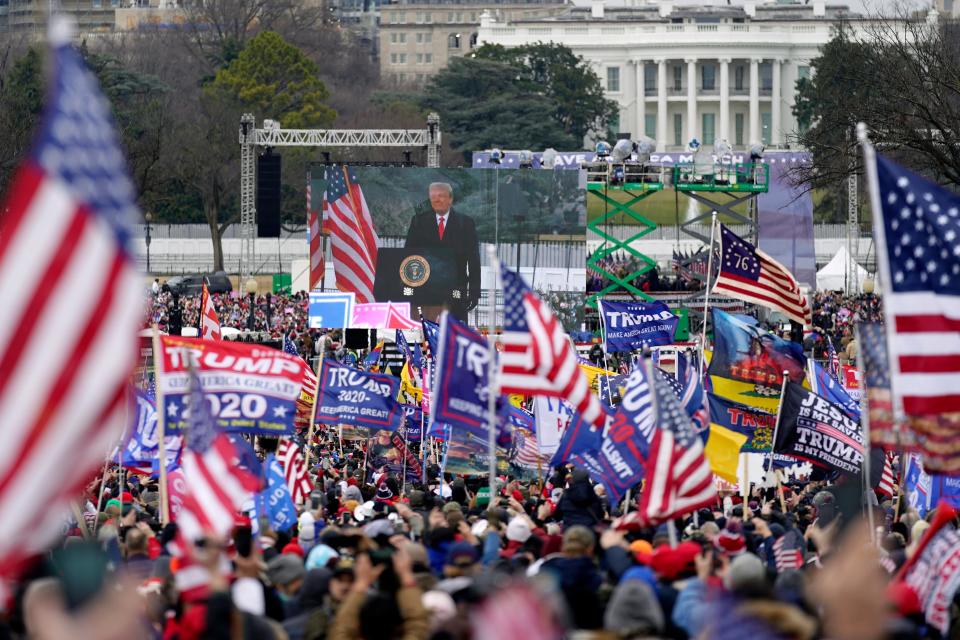
Trump tweeted Dec. 19 an invitation to a “big protest in D.C.” on Jan. 6. “Be there, will be wild!”
Meggs, who was indicted with Watkins, noticed.
“Trump said It’s gonna be wild!!!!!!!” Meggs wrote Dec. 22 on Facebook. “He wants us to make it WILD that’s what he’s saying. He called us all to the Capitol and wants us to make it wild!!! Sir Yes Sir!!!”
When Trump began speaking prior to the riot on Jan. 6, text analysis of Parler posts by USA TODAY showed that users' calls for civil war intensified.
Ten Democratic lawmakers and the NAACP have sued Trump, accusing him of incitement.
Pursuing other suspects
Investigators might leverage early charges to test whether defendants will cooperate, perhaps disclosing who else was involved in exchange for a plea bargain with less punishment.
Davis, who led Baltimore police investigating riots, looting and arson after the 2015 death of Freddie Gray, said detectives will exchange statements from lower-level defendants with lesser punishments, in order to find out who was ultimately responsible.
“Detectives are always ready to trade a six-pack for a 12-pack, and then they look to trade that 12-pack for a case of beer,” Davis said.
One defendant in the Capitol riot, Jon Ryan Schaffer, 53, of Columbus, Indiana, a member of Oath Keepers who was not charged with conspiracy, pleaded guilty and agreed to cooperate with investigators. He was charged with being one of the first to breach the Capitol and with spraying police with bear spray. Schaffer pleaded guilty to obstruction of an official proceeding and entering a restricted building with a dangerous weapon.
“This thing is probably going to look differently a year from now than it does today,” Davis said. “We’ll have much better visibility by April 2022.”
This article originally appeared on USA TODAY: Capitol riot conspiracy charge faces 31 suspects, including Proud Boys

 money
money 